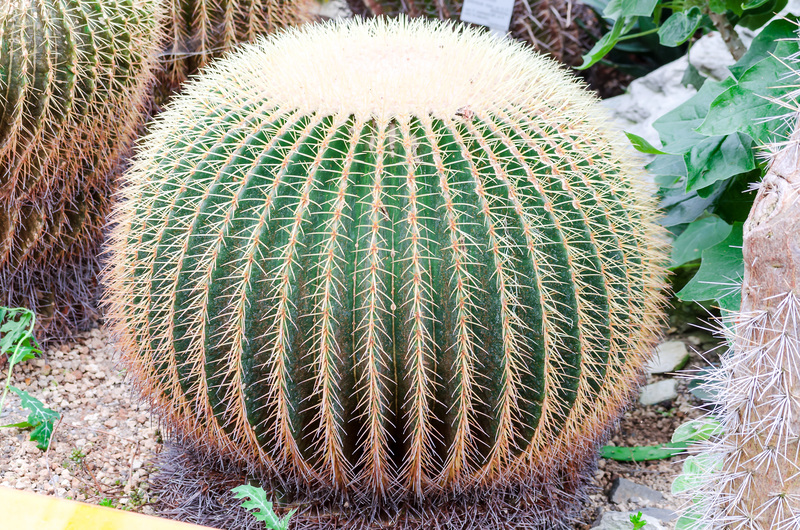Maximize Plant Health with Winter Pruning
Posted on 23/09/2024
Winter pruning is a crucial practice adopted by gardeners and horticulturists to ensure the health, longevity, and productivity of plants. This essential gardening task involves the deliberate cutting and trimming of trees, shrubs, and other plants during their dormant stage. Adequate winter pruning can significantly benefit your garden, leading to healthier growth, better air circulation, and improved fruit and flower production. This article will guide you through the process of winter pruning and explain how it can maximize plant health.
Understanding the Dormant Phase
The dormant phase is a period during which plants temporarily halt their growth and conserve energy. Typically occurring in winter, this phase is critical for pruning because plants are less susceptible to diseases, pests, and environmental stress. During dormancy, the flow of sap is minimal, reducing the risk of "bleeding" that can occur in some plants when pruned during active growth. Understanding the importance of this stage will help you appreciate why winter pruning is so effective in promoting plant health.

The Benefits of Winter Pruning
Winter pruning offers numerous benefits that contribute to the overall well-being of your plants. Some of these advantages include:
- Enhanced Growth: By removing dead, damaged, or diseased branches, winter pruning encourages new, healthy growth in the spring.
- Improved Air Circulation: Thinning out dense canopies allows for better air circulation, reducing the likelihood of fungal infections and promoting healthier foliage.
- Pest and Disease Management: Pruning during dormancy helps manage pests and diseases by removing infected areas and improving the plant's overall defense mechanisms.
- Increased Sunlight Penetration: Pruning opens up the plant's structure, enabling more sunlight to reach the inner branches and leaves, which is essential for photosynthesis and robust growth.
- Better Fruit and Flower Production: Regular pruning stimulates the production of more blossoms and fruit as the plant's energy is redirected to the healthy, productive parts.
Tools and Equipment for Winter Pruning
To perform effective winter pruning, you'll need a set of reliable tools and equipment, including:
- Pruning Shears: Ideal for small branches and twigs, a good pair of pruning shears is essential for making clean cuts without damaging the plant.
- Loppers: These are suitable for cutting thicker branches that are beyond the capacity of pruning shears.
- Pruning Saw: A pruning saw is perfect for cutting larger branches and limbs that require more precision.
- Pole Pruner: This tool helps you reach high branches that are difficult to access without a ladder.
- Protective Gear: Always wear gloves and safety glasses to protect yourself from potential injuries while pruning.
Winter Pruning Techniques
The following techniques are essential for effective winter pruning:
- Thinning: This involves selectively removing branches to improve air circulation and light penetration. Focus on cutting branches that are crossing, rubbing, or growing inward.
- Heading: Heading cuts shorten the length of a branch, stimulating new growth and shaping the plant. It's important to make the cut just above a bud that faces the direction you want the new growth to go.
- Deadheading: This technique involves removing spent flowers and fruit to encourage new blooms and fruit production.
- Sanitation Pruning: Remove any dead or diseased branches to prevent the spread of pathogens and pests.
Timing and Plant-Specific Considerations
While winter pruning generally occurs during the dormant phase, timing can vary based on the specific type of plant and the climate in your region. Here are some guidelines for pruning different types of plants:
- Deciduous Trees and Shrubs: These plants should be pruned after they have dropped their leaves and before new growth begins in the spring. This window typically ranges from late fall to early spring.
- Evergreens: Prune evergreens during the late winter months, just before new growth starts.
- Fruit Trees: Fruit trees benefit from winter pruning as it promotes better fruit production and reduces the risk of disease. Prune after the tree has gone dormant but before the buds start to swell.
Common Mistakes to Avoid
Even seasoned gardeners can make mistakes when it comes to winter pruning. Here are some common errors to avoid:
- Over-Pruning: Cutting too much can weaken the plant and make it more vulnerable to disease and pests. Stick to removing no more than 25% of the plant's total branches.
- Incorrect Cuts: Making improper cuts can damage the plant and hinder its ability to heal. Always use sharp tools and make clean cuts at the appropriate angle.
- Pruning at the Wrong Time: Pruning during the wrong season can stress the plant and reduce its growth potential. Always prune during the dormant phase.
- Neglecting to Clean Tools: Dirty tools can spread diseases from one plant to another. Always clean and disinfect your pruning tools before and after use.

Caring for Plants Post-Pruning
After completing your winter pruning, it's essential to take care of your plants to ensure they recover and thrive:
- Mulching: Apply a layer of mulch around the base of the pruned plants to retain moisture and regulate soil temperature.
- Watering: Ensure the plants receive adequate water, especially if the winter is dry.
- Monitoring: Keep an eye on the pruned plants for signs of stress or disease. Promptly address any issues that arise.
Conclusion
Winter pruning is a vital practice for maximizing plant health and ensuring your garden's productivity. By understanding the benefits, using the right tools, employing proper techniques, and avoiding common mistakes, you can make the most of this important gardening task. Regular winter pruning, combined with attentive post-pruning care, will lead to healthier, more vigorous plants that reward you with beautiful blooms and bountiful harvests. So, embrace the dormant phase and give your garden the loving care it deserves through thoughtful winter pruning.



